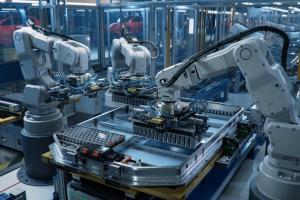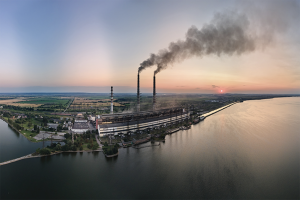
Summer Water Fun... How Long Will it Last?
As the summer winds down, how did you enjoy the season? Maybe a trip to the beach for a swim, a run through the sprinkler, or maybe just relaxing with a cold glass of water? Rapidly these activities are in danger of becoming a luxury, if not already. The
World Health Organization (WHO) estimates that 1.2 billion people live in areas of water scarcity. This number is difficult to grasp;
National Geographic recently did a very
in-depth issue putting faces on this world challange.
Even with this looming problem, there are many places--often those with a history of abundance--where this valuable resource is wasted or used inefficiently. In well supplied areas, water may be one of the simplest molecules we depend on, but by its lack of political allegiance and disregard for borders it binds us together in the most complicated ways. Even within U.S. there are many complications. Regions accustomed to plentiful supply rarely control or track its use and have to deal with new realities during extended periods of
below normal rainfall or
growing populations.
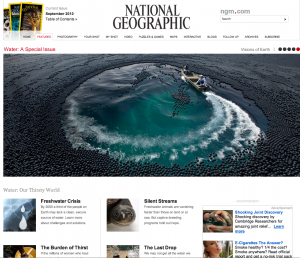
National Geographic Special Issue: Water
The Northeast and Southeast have recently experienced supply problems requiring residents to change habits or priorities. In the West and portions of the Northwest this supply issue has long been overcome by massive
infrastructure projects and intense political debates as industry, agriculture, residents, and representatives for non-human users fight for access. As rainfall decreases and inefficiencies take their toll, the debates intensify.
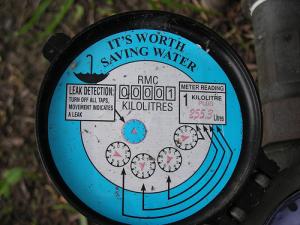
Reading your school water meter regularly to monitor water usage is a great way to check for leaks
The limited data there is on
water usage provides some interesting information; there are some rather
simple changes that would provide substantial improvements. Almost half of overall water demand comes from
electricity generation and you can save water just by reducing your electric bill. Another third goes to irrigation; we can also eat smarter. Ten to fifteen percent of
potable water is lost from plant to
home via old and leaking pipes--a gross inefficiency.
As an individual there are many water saving options available:
- using appliances more efficiently (only running full loads)
- buying water and energy efficient appliances
- maintenance (leaky faucets add up quickly)
-
water efficient landscaping and/or capture rainwater for watering needs
- or simply being aware of how and when you are using water.
Recycling Water in the Home
There is another significant opportunity that will require the education of regulators and end users alike. About half of the typical household water demand is for activities that do not require drinking-quality water, such as flushing toilets or
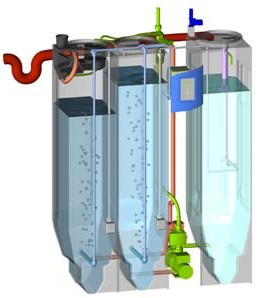
Pontos Aquacycle
landscaping. There are systems, such as the
Pontos Aquacycle, that are being sold in Europe and the UK that capture water from sinks and washing activities (called
grey water) in a building, treat it, and store it for reuse. The Pontos system settles out any solids that might be in the water, disinfects it with a UV light, and directs the collected water for suitable uses - like flushing toilets. Without changing any habits (and estimated 5-10 year payback period depending on the market) a household's water demand can be cut nearly in half.
The main reason these systems are not on the market in the US is that
current regulations do not consistently allow the reuse of grey water despite the evidence that there is no risk to using properly treated grey water (Jurisdictions can use
International Plumbing Code,
Uniform Plumbing Code, or something in between). These companies are ready to jump in once the rules are set.
Some Positive Industry Example of Water Use:
Industry also has plenty of room for improvements. There have been some very sizable and innovative projects undertaken recently. The common link between these is that it is hard to tell if these companies are dedicated to making the world a better place or if they are simply running efficient businesses. These two concepts are extremely intertwined.
-
Frito-Lay recovers water from the incoming potatoes, cleans it, and uses it for washing incoming potatoes or corn.
-
Gatorade has reduced water consumption by about 15% (with overall energy savings of 30% in some plants). Among the changes is that Gatorade bottles are cleaned with a high velocity burst of ionized air before filling instead of water. This project was led by the Atlanta-area plant and motivated by the regions recent water problems. The results were so positive that it was rolled out across the nation.
-
PepsiCo India achieved a water balance in 2009 on its Aquafina brand. Demand was reduced through process efficiency improvements and water was returned to Indian aquifers through a portfolio of projects throughout India. This included rain collection at their plants, funding public rain collection projects, and water conservation projects throughout the country.
Related articles by Zemanta
 Summer Water Fun... How Long Will it Last?
As the summer winds down, how did you enjoy the season? Maybe a trip to the beach for a swim, a run through the sprinkler, or maybe just relaxing with a cold glass of water? Rapidly these activities are in danger of becoming a luxury, if not already. The World Health Organization (WHO) estimates that 1.2 billion people live in areas of water scarcity. This number is difficult to grasp; National Geographic recently did a very in-depth issue putting faces on this world challange.
Even with this looming problem, there are many places--often those with a history of abundance--where this valuable resource is wasted or used inefficiently. In well supplied areas, water may be one of the simplest molecules we depend on, but by its lack of political allegiance and disregard for borders it binds us together in the most complicated ways. Even within U.S. there are many complications. Regions accustomed to plentiful supply rarely control or track its use and have to deal with new realities during extended periods of below normal rainfall or growing populations.
Summer Water Fun... How Long Will it Last?
As the summer winds down, how did you enjoy the season? Maybe a trip to the beach for a swim, a run through the sprinkler, or maybe just relaxing with a cold glass of water? Rapidly these activities are in danger of becoming a luxury, if not already. The World Health Organization (WHO) estimates that 1.2 billion people live in areas of water scarcity. This number is difficult to grasp; National Geographic recently did a very in-depth issue putting faces on this world challange.
Even with this looming problem, there are many places--often those with a history of abundance--where this valuable resource is wasted or used inefficiently. In well supplied areas, water may be one of the simplest molecules we depend on, but by its lack of political allegiance and disregard for borders it binds us together in the most complicated ways. Even within U.S. there are many complications. Regions accustomed to plentiful supply rarely control or track its use and have to deal with new realities during extended periods of below normal rainfall or growing populations.
 National Geographic Special Issue: Water
The Northeast and Southeast have recently experienced supply problems requiring residents to change habits or priorities. In the West and portions of the Northwest this supply issue has long been overcome by massive infrastructure projects and intense political debates as industry, agriculture, residents, and representatives for non-human users fight for access. As rainfall decreases and inefficiencies take their toll, the debates intensify.
National Geographic Special Issue: Water
The Northeast and Southeast have recently experienced supply problems requiring residents to change habits or priorities. In the West and portions of the Northwest this supply issue has long been overcome by massive infrastructure projects and intense political debates as industry, agriculture, residents, and representatives for non-human users fight for access. As rainfall decreases and inefficiencies take their toll, the debates intensify.
 Reading your school water meter regularly to monitor water usage is a great way to check for leaks
The limited data there is on water usage provides some interesting information; there are some rather simple changes that would provide substantial improvements. Almost half of overall water demand comes from electricity generation and you can save water just by reducing your electric bill. Another third goes to irrigation; we can also eat smarter. Ten to fifteen percent of potable water is lost from plant to home via old and leaking pipes--a gross inefficiency.
Reading your school water meter regularly to monitor water usage is a great way to check for leaks
The limited data there is on water usage provides some interesting information; there are some rather simple changes that would provide substantial improvements. Almost half of overall water demand comes from electricity generation and you can save water just by reducing your electric bill. Another third goes to irrigation; we can also eat smarter. Ten to fifteen percent of potable water is lost from plant to home via old and leaking pipes--a gross inefficiency.
 Pontos Aquacycle
landscaping. There are systems, such as the Pontos Aquacycle, that are being sold in Europe and the UK that capture water from sinks and washing activities (called grey water) in a building, treat it, and store it for reuse. The Pontos system settles out any solids that might be in the water, disinfects it with a UV light, and directs the collected water for suitable uses - like flushing toilets. Without changing any habits (and estimated 5-10 year payback period depending on the market) a household's water demand can be cut nearly in half.
The main reason these systems are not on the market in the US is that current regulations do not consistently allow the reuse of grey water despite the evidence that there is no risk to using properly treated grey water (Jurisdictions can use International Plumbing Code, Uniform Plumbing Code, or something in between). These companies are ready to jump in once the rules are set.
Pontos Aquacycle
landscaping. There are systems, such as the Pontos Aquacycle, that are being sold in Europe and the UK that capture water from sinks and washing activities (called grey water) in a building, treat it, and store it for reuse. The Pontos system settles out any solids that might be in the water, disinfects it with a UV light, and directs the collected water for suitable uses - like flushing toilets. Without changing any habits (and estimated 5-10 year payback period depending on the market) a household's water demand can be cut nearly in half.
The main reason these systems are not on the market in the US is that current regulations do not consistently allow the reuse of grey water despite the evidence that there is no risk to using properly treated grey water (Jurisdictions can use International Plumbing Code, Uniform Plumbing Code, or something in between). These companies are ready to jump in once the rules are set.


